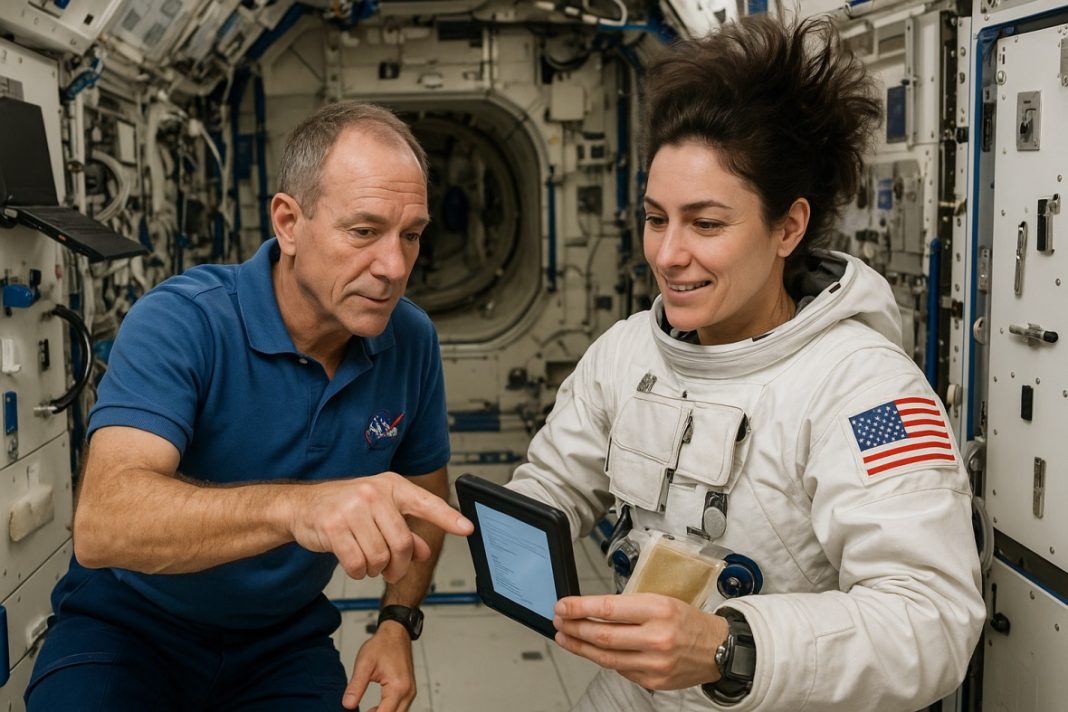When most people think about space station design, they picture advanced technology, high-tech control panels, and complicated engineering systems. But there is one simple invention that quietly plays a massive role in keeping astronauts safe and organized: Velcro. This tiny innovation is a perfect example of how sometimes the simplest solutions are the most effective, especially in the unique challenges of zero gravity.
The Magic of a Simple Fastener
On Earth, gravity keeps our belongings in place. Put your coffee cup on your desk, and it stays there. In space, that same coffee cup would float freely unless something holds it down. That is where Velcro comes in. Its official name is hook and loop fastener and it works by having one side covered in tiny hooks and the other in soft loops. When pressed together, the hooks grab onto the loops and create a secure bond that is easy to pull apart when needed.
In a zero-gravity environment like the International Space Station (ISS), Velcro becomes an essential part of daily life. It keeps things from floating away, prevents accidents, and helps maintain order in a place where even a floating pen can become a problem.
Organizing Everyday Life in Zero Gravity
Imagine trying to cook a meal, complete a repair, or even just write notes while everything around you drifts aimlessly. Without gravity, items like tools, food packets, and personal belongings need to be secured after every use. Velcro allows astronauts to stick these items directly to the walls, consoles, or their workspaces.
Food pouches are often backed with Velcro, allowing them to stay put during mealtime. Tools are attached to workstations so they do not float away in the middle of critical repairs. Even tablets, pens, and notebooks have Velcro strips so they can be attached within easy reach. It might seem small, but being able to quickly secure items prevents chaos and keeps the crew efficient.
Keeping Equipment Safe and Secure
Beyond personal items, Velcro plays a big role in securing larger equipment. Scientific instruments, cables, and storage containers are all fastened with Velcro straps to prevent them from drifting into delicate instruments or blocking pathways. In tight quarters where space is limited, this simple solution allows for flexibility and quick adjustments as needed.
When astronauts conduct experiments, they often attach cameras or monitoring devices using Velcro strips. This allows for stable, hands-free operation, which is essential in a weightless environment. It also makes it easy to move equipment around as experiments change or new data needs to be gathered.
An Essential Part of the Spacesuit
Velcro is not limited to the inside of the space station. It is also built directly into the spacesuits that astronauts wear for spacewalks. These suits include multiple Velcro patches where tools, gloves, and other accessories can be attached and accessed easily during a mission.
In space, losing a tool is not just inconvenient; it can be dangerous. A lost object could drift into delicate equipment, block a hatch, or even become a high-speed projectile in microgravity. By using Velcro to secure tools to their suits, astronauts minimize this risk while keeping essential equipment close at hand.
A Solution for Quick Repairs
Space stations are constantly being updated and repaired. Velcro makes it easy to add or remove panels, adjust wiring, and swap out equipment without needing complex hardware. Velcro strips are often used in modular design, allowing astronauts to replace components quickly and safely.
This flexibility is especially valuable when dealing with unexpected situations. If a piece of equipment fails or needs to be modified, Velcro allows for quick solutions without requiring specially designed brackets or fittings. It gives astronauts and engineers the ability to adapt to challenges in real time.
The Psychological Benefits of Organization
Living and working in space for long periods can be mentally challenging. Having a clean, organized environment contributes to the crew’s overall well-being. Velcro helps maintain that organization by keeping items securely in place and reducing clutter. When everything has a designated spot, astronauts spend less time searching for tools or supplies and more time focusing on their tasks.
An organized workspace also reduces the risk of accidents and mistakes, which are critical in an environment where even small errors can have serious consequences. The simple act of sticking a tablet or food pouch to the wall with Velcro can go a long way in maintaining order and reducing stress.
A Small Invention with a Big Impact
It is easy to overlook Velcro when thinking about the advanced systems that make space exploration possible. Yet this humble fastener is a crucial part of life in space. Its simplicity, reliability, and versatility have made it a staple in the design of space stations and missions around the world.
From keeping tools in place to securing food packets and helping astronauts stay organized, Velcro proves that sometimes the most important solutions do not require complex engineering. They just need a little creativity and an understanding of the environment.
The next time you open your Velcro wallet or fasten your sneakers, take a moment to appreciate how that same technology is quietly supporting astronauts as they work in one of the most challenging environments imaginable. Velcro may be small, but in space, it is nothing short of essential.







